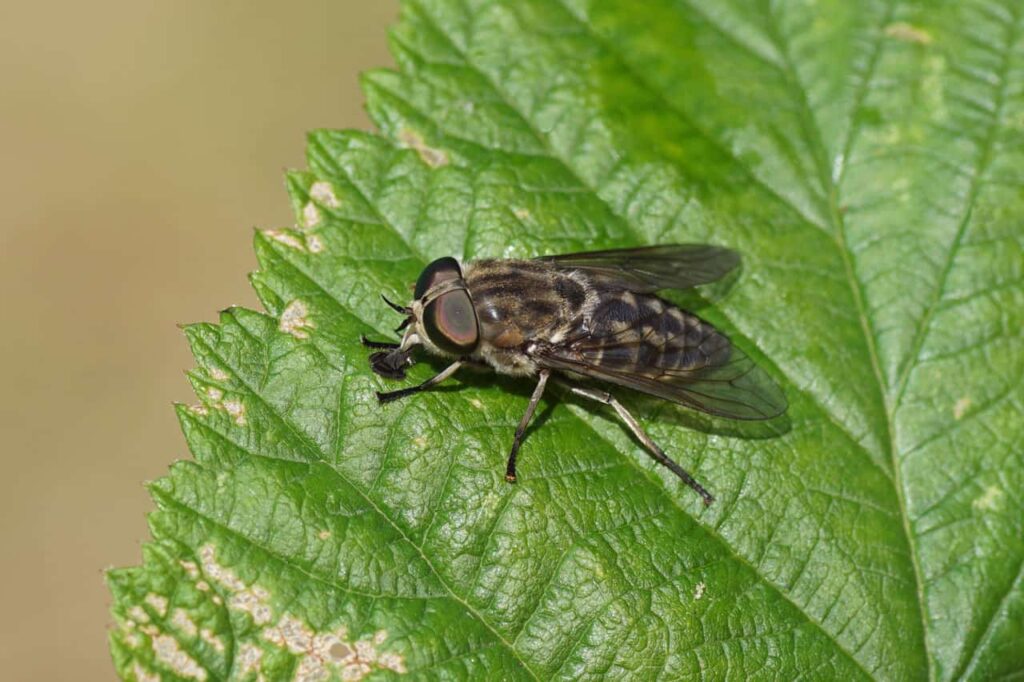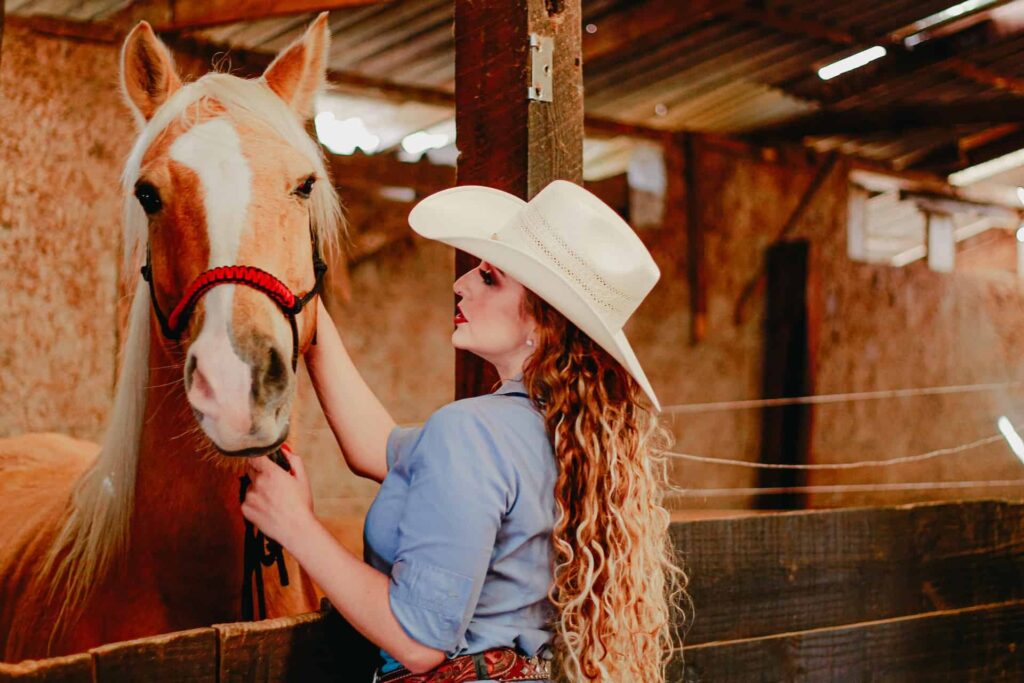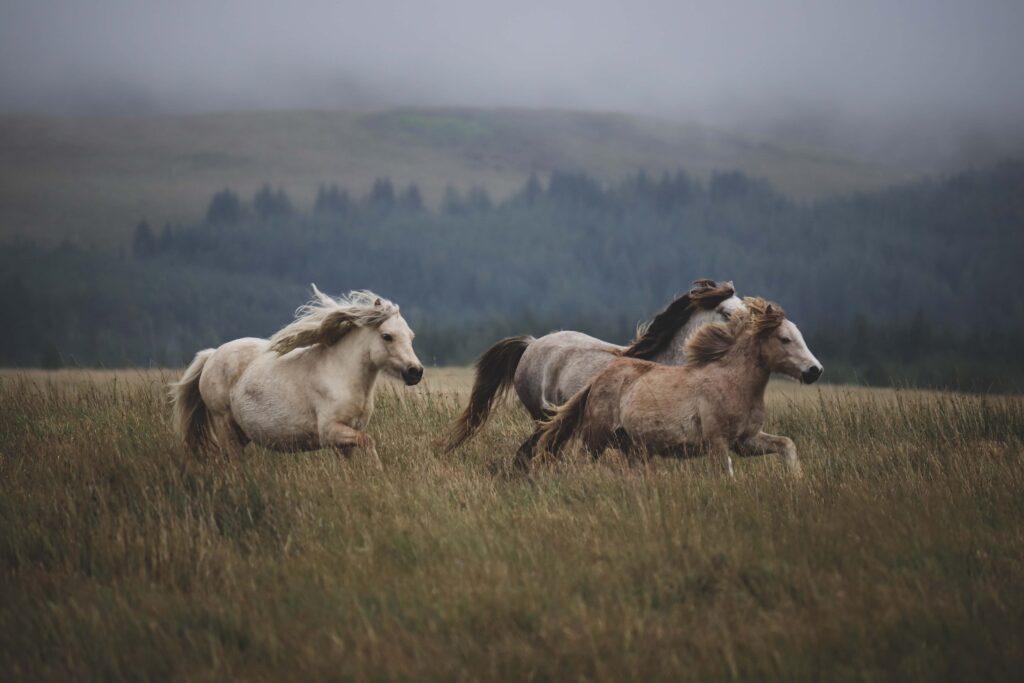Horse flies are not only a nuisance, they are a potential danger to humans and animals (particularly horses and cattle). These biting insects are known to carry diseases and cause significant distress to their victims. During summer months especially, it’s crucial for people living in rural and agricultural areas to take practical steps on how to get rid of horse flies and protect themselves, their families, and their animals.
Understanding the behavior and biology of horse flies aids in effectively controlling their populations. They are larger than house flies and mosquitoes but share some similar habits, such as being attracted to carbon dioxide and warmth. The critical factor in distinguishing horse flies from other pests is their ability to bite and cause pain due to their needle-like mouthparts. Knowing these characteristics can help in devising effective strategies to create barriers, eliminate breeding grounds, and use both home remedies and commercial products to repel and control their infestation.
Key Takeaways
- Horse flies pose risks to humans and animals due to their biting and disease-carrying abilities
- Understanding their biology and behavior can help in developing effective control strategies
- Combining barriers, remedies, and commercial products can keep horsefly populations in check
Understanding Horse Flies
Horse flies are a common nuisance for both humans and animals, particularly horses. They belong to the Tabanidae family and are known for their painful bite. There are over 3,000 species of horse flies, with varying appearance and habits.
The size of horseflies can range from 10 to 30 mm, and they typically have a dark color. They are easily identified by their large, often colorful eyes that cover most of their head. The mouthparts of horse flies are specialized for biting and sucking blood. While male horse flies consume nectar, female horse flies need blood for egg production.
The life cycle of horse flies consists of four stages: egg, larva, pupa, and adult. Female horse flies lay their eggs near water sources or in moist soil. The larvae, which are aquatic or semi-aquatic, feed on decaying organic matter or small invertebrates, eventually transforming into pupae. The pupal stage can last anywhere from a week to several months, depending on environmental conditions. Once the adult horse fly emerges, it begins searching for food and a mate to continue the life cycle.
In terms of behavior, horse flies are attracted to large, dark, moving objects, which is why they target horses and other large mammals. They use their keen vision to locate potential hosts and are most active during the day. Horse flies tend to be more prevalent in hot, sunny weather and show decreased activity during overcast or cooler days.
Horse flies are a diverse group of insects that share common features such as size, eye structure, and blood-feeding behavior among female flies. Understanding their appearance, life cycle, and habits can help in developing effective strategies for controlling their population and reducing the risk of bites.
Horse Fly vs House Flies and Mosquitoes
Horse flies, house flies, and mosquitoes are all common insect pests that can cause annoyance and transmit diseases. Despite some similarities, these insects have distinct differences in appearance, behavior, and methods for dealing with them.
Horse flies are relatively large insects, usually measuring between 10-30mm in length. They have a robust body, large eyes, and powerful biting mouthparts, which they use to suck blood from their hosts, usually large mammals like horses, cattle, and humans. The bites from horse flies can be quite painful and may result in allergic reactions in some individuals. Their breeding sites are typically in moist soil near water, where females lay their eggs. Horse flies are most active during the day, particularly on hot, sunny days.
House flies, on the other hand, are smaller insects, around 6-7mm in length, with a lighter, grey-brown body. They breed in decaying organic matter, such as animal feces, garbage, and rotting food. House flies can transmit a wide range of pathogens, as they move from contaminated surfaces to human food and utensils, inadvertently spreading bacteria, viruses, and parasites. They are generally most active during the day but can be found both indoors and outdoors.
Mosquitoes are small, delicate insects with a body length of about 3-6mm. They are easily identified by their long, thin legs and proboscis, which the females use to feed on blood. Mosquitoes breed in stagnant water and can transmit diseases like malaria, dengue fever, and West Nile virus through their bites. They are most active during dawn and dusk.
To deal with horse flies, the use of insecticides may not be as effective as for mosquito control. Instead, one can rely on physical barriers, like wearing protective clothing or employing traps designed specifically for horse flies. For house flies, keeping a clean environment by managing waste disposal and using fly screens in windows are effective preventative measures. Insecticides and bait traps can also usually work well. Controlling mosquitoes usually involves eliminating potential breeding sites by removing standing water or treating it with larvicides. Using repellents and insecticides along with mosquito nets, screens, and protective clothing can minimize the risk of bites.
Understanding the differences between horse flies, house flies, and mosquitoes is necessary for implementing the most effective control measures.

Barriers to Horse Flies
Horse flies are a significant nuisance for animals and humans alike. They are attracted to various factors such as doors, windows, and areas where animals rest or take shade. To effectively reduce their presence, create barriers around wet areas, yards, barns, ponds, and standing water. This section will discuss several methods to help deter horse flies from these areas.
One effective method to minimize horse fly presence is installing fine mesh screens over doors and windows. This prevents them from entering buildings, thus protecting animals, pets, and livestock. Doors should also be sealed properly, ensuring there are no gaps that might allow the flies to enter.
Another important factor to consider is the cleanliness of the yard and surrounding areas. Regularly clearing standing water and properly maintaining ponds can significantly reduce breeding sites for horse flies. Wet areas can be managed by filling in low spots that collect water or by installing proper drainage systems.
Shady spots are common resting places for animals, including dogs and livestock. It is important to keep these resting areas clean and debris-free so that horse flies are less attracted to them. Equipping the animals with fly masks or repellent sprays can help deter horse flies from bothering them.
In barns and other sheltered areas, using light traps can also be effective. These traps emit ultraviolet light, which attracts the horse flies and eliminates them. Maintaining the cleanliness of feed and bedding areas is also important in order to reduce any attraction for horse flies.
Strategic landscaping can help create natural barriers to horse flies. Planting tall hedges or setting up fences around wet areas can impact the flies’ flight path, making it more challenging for them to reach animal resting areas. It is important, however, to avoid creating any additional shade or shelter that might inadvertently attract more horse flies.
Implementing these barriers and maintaining a clean and well-kept environment can significantly help reduce horsefly populations, ultimately leading to a more comfortable and healthier living space for animals and humans alike.
How Horse Flies Breed
Horse flies are a common nuisance, especially during hot summer months. These biting insects are found in both rural and urban settings and can make life uncomfortable for both humans and animals. Understanding their breeding habits can help in implementing effective methods to control their population and reduce their impact.
Female horse flies require a blood meal in order to lay eggs. After mating, they search for suitable prey, such as livestock or humans, to feed on their blood. Blood is rich in protein, which allows the female horse fly to produce eggs that are viable and healthy. On the other hand, male horse flies primarily feed on nectar and do not bite or require blood meals.
Once a female horsefly has secured a blood meal, she lays her eggs in a suitable environment. Typically, these are places with abundant moisture, such as near water sources or decaying organic matter like manure or stool. These locations provide the necessary nutrients and habitat for the larvae to develop and grow, eventually turning into adult horse flies.
The eggs hatch into larvae, and the larval stage is a crucial phase in the development of horse flies. During this time, they undergo multiple molts and grow in size. Horse fly larvae are generally aquatic or semi-aquatic and can be found in damp environments like marshy areas and drainage ditches. They also have a predatory nature, feeding on other insects and small invertebrates to support their growth.
In order to effectively control and get rid of horse flies, it’s important to target their breeding habits. Reducing their access to suitable breeding sites and implementing preventive measures can help curtail their population. By reducing stagnant water sources, maintaining proper sanitation, and employing various trapping methods, it’s possible to keep horse flies in check and minimize their impact.
Home Remedies for Repelling Horse Flies
Many home remedies can help repel horse flies and keep them at bay. One effective method to get rid of horse flies is using a fly trap. You can make a simple fly trap by suspending a large plastic ball, like a beach ball, coated in a sticky substance such as dish soap, honey, or sugar water. Hang the ball in a horse fly-infested area, and it will attract and trap the flies.
Another effective fly trap is the traditional fly paper. Hang strips of fly paper in areas where horse flies are common, and they will stick to the adhesive surface. Replace the strips regularly to maintain their effectiveness.
Vinegar is another home remedy that can help control horse flies. Mix equal parts white vinegar and water in a spray bottle, and spray it around your home’s perimeter or directly on the flies when you see them. The strong smell of vinegar will deter horse flies from approaching your home.
Essential oils are known to repel various insects, including horse flies. Some effective oils include citronella oil, eucalyptus, and lavender. Dilute the essential oils with a carrier oil or alcohol, and apply the mixture to your skin, clothing, or outdoor living areas. You can also use oil-infused candles or diffusers to spread the scent and keep horse flies away.
Using a plastic bag filled with water and a few pennies can help deter horse flies. Hang the bag near entrances to your home or other areas where horse flies are a problem. The light reflected by the pennies will confuse and repel horse flies.
Maintain a clean environment and remove potential breeding sources, such as standing water or damp organic material, to control horse flies more effectively. By employing these home remedies and keeping your surroundings clean, you can create a horse fly-free zone and enjoy your outdoor activities without any unwanted visitors.
The Impact of Horse Flies
Horse flies are known for their painful bites, which can cause discomfort and irritation to both humans and animals. When a horse fly bites, it cuts the skin and laps up the blood, using its specialized mouthparts. The saliva of horse flies contains compounds that prevent blood clotting, which can lead to prolonged bleeding and potentially cause a rash or swelling at the site of the bite.
Aside from the physical discomfort caused by their bites, horse flies can also transmit diseases. According to a study on animal disease agents transmitted by horse flies and deer flies, some infected horse flies were found to carry pathogens that could cause infections in animals, including horses. These infections may lead to reduced weight gain or productivity in livestock, further underscoring the importance of controlling horseflies.
Horse flies are not only a nuisance to people and animals but also a potential threat to public health and the agricultural industry. Take steps to minimize their impact by employing effective control measures, such as using fly traps, repellents, and integrated pest management strategies. By understanding the impact of horse flies and taking appropriate action, people can minimize the risks associated with these biting pests and protect themselves, their animals, and their livelihoods.

Commercial Methods for Control
Horse flies are a common nuisance for both humans and animals, and their bites can be painful. There are several commercial methods available for controlling these pests, including repellents, fly sprays, and insecticides.
Repellents and Fly Sprays: A popular approach for keeping horse flies at bay is applying chemical repellents or fly sprays to the skin or clothing. These products usually contain active ingredients like DEET, picaridin, or natural oils such as citronella or eucalyptus. They work by creating an odor barrier that discourages horse flies from landing on the treated areas. It is important to follow the manufacturer’s instructions for proper application and reapplication to maintain effectiveness.
Insecticides: For a more powerful approach, insecticides can be used to control horsefly populations. Organophosphates, one of the major classes of insecticides, act on the nervous systems of insects to cause paralysis and death. These chemicals can be applied to surfaces where horse flies are known to rest or breed, such as the sides of barns or other structures. However, care should be taken while using insecticides, as they can also be harmful to non-target organisms and the environment. Always follow the label instructions and consult a professional if necessary.
Horse Pal: Another option for reducing horse fly numbers in a specific area is using a specially designed trap, such as the Horse Pal. This device uses motion, color, and heat to attract horse flies, who become trapped and die. By placing the Horse Pal in strategic locations around your property, you can reduce numbers without the use of chemicals.
Using a combination of commercial methods to control horse flies can be both effective and safe. By treating yourself and your environment with a combination of repellents, insecticides, and traps, you can minimize the impact horse flies have on your daily life.
Frequently Asked Questions
What methods are effective for eliminating horse flies on cattle?
There are several methods to help eliminate horse flies on cattle. One approach is to use insecticides, either as sprays or pour-ons, specifically designed for cattle use. Fly predators like Beauveria bassiana also warrant consideration.
How can one keep horse flies away while at the beach?
To keep horse flies away at the beach, apply insect repellent containing DEET or Picaridin on exposed skin. Also, wear light-colored clothing as horse flies are generally attracted to dark colors. When possible, stay in the shade to reduce the likelihood of attracting horse flies.
Why do horse flies suddenly appear in homes?
Horse flies may enter homes through open windows and doors, especially when they are attracted by human activity or certain scents. They can also be present if there is a stable or livestock breeding ground nearby. Maintaining a clean and properly sealed home environment can help reduce the chances of horse flies entering.
Which repellents are most effective for humans against horse flies?
Insect repellents containing DEET or Picaridin are considered effective against horse flies. Products with higher concentrations of these active ingredients typically provide longer-lasting protection. Apply repellents according to the manufacturer’s instructions and reapply as needed.
How can a homemade horse fly trap be constructed?
To construct a homemade horse fly trap, start by painting a large plastic ball or inflated balloon black – as horse flies are attracted to dark colors. Attach the painted ball to a rope and hang it at a height that makes it easily visible and accessible to horse flies. Beneath the ball, place a tray with water and liquid dish soap. As horse flies get attracted to the ball, they may end up in the soapy water, making it hard for them to escape.
Are bug zappers an effective solution for killing horse flies?
Bug zappers can be effective in killing many types of flying insects, including horse flies. However, these devices may not be sufficient as the sole means of controlling the horse flies. It is advisable to use bug zappers in conjunction with other preventative and control measures, such as repellents, traps, and vegetation management.
Last Updated on November 15, 2023 by Nate Dewsbury



